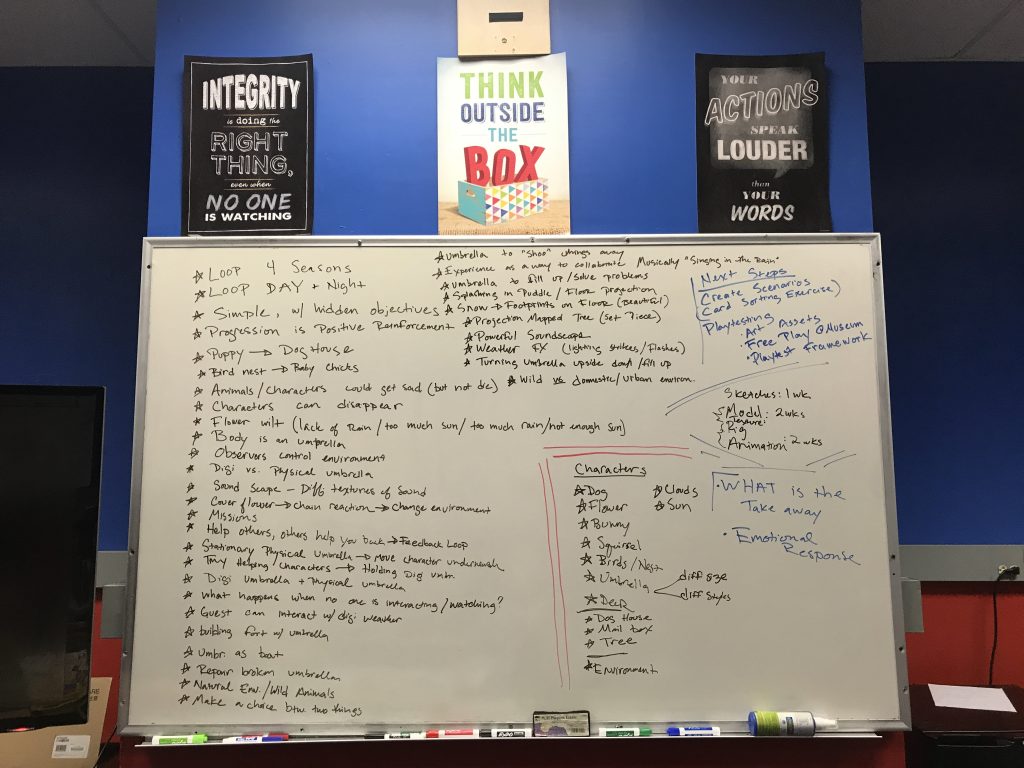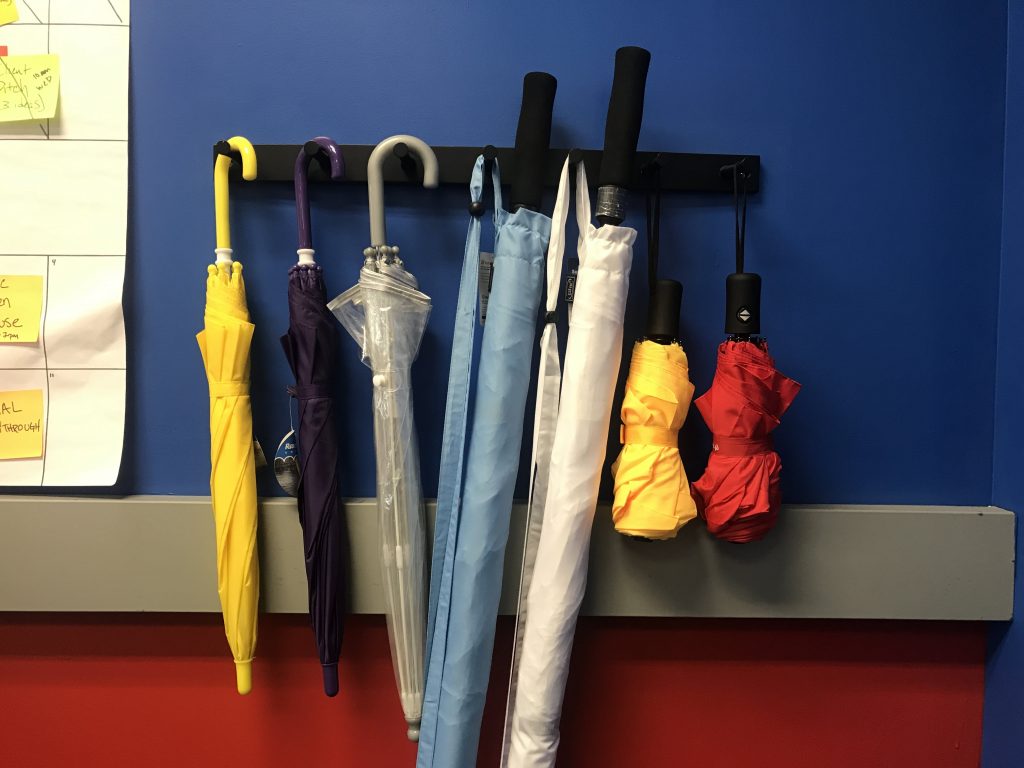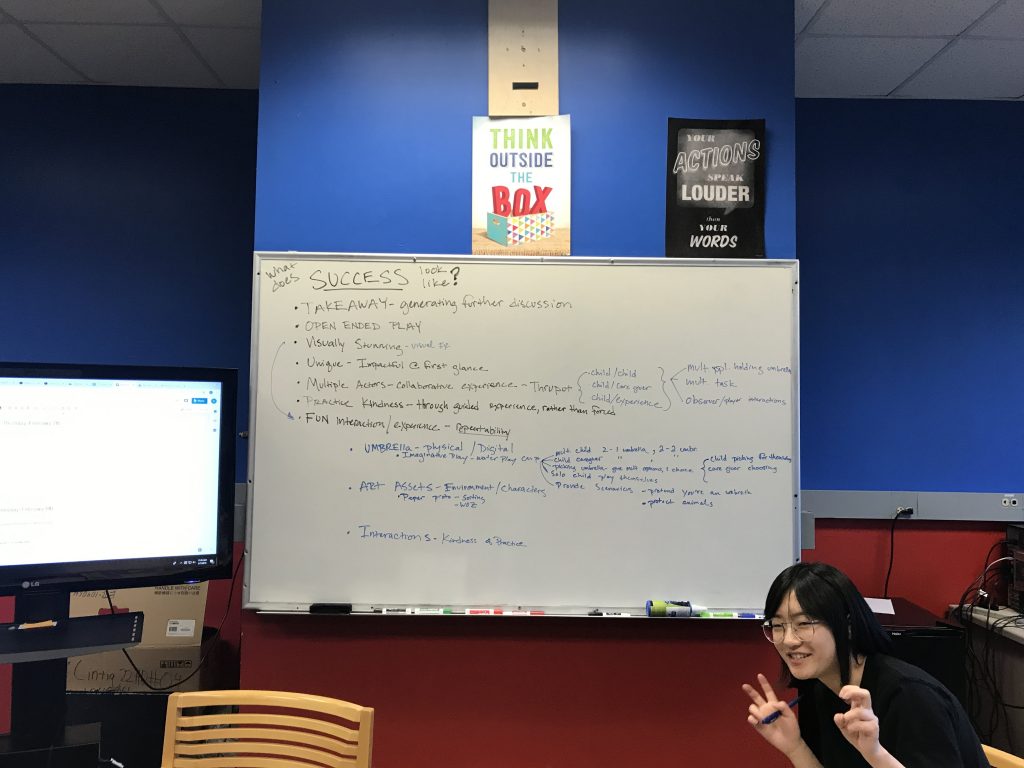Week 4
This week we presented our work to faculty for 1/4 walkarounds to receive feedback. We were primarily wondering:
- What type of technology should we look at?
- How should we playtest?
- Should we create a simple or multi-layered experience?
Overall, our feedback was positive. Faculty stated that the concept was “evocative,” and “literal, but powerful.”
We received many good recommendations/considerations for technology:
- Open CV
- No power to umbrella
- Highly reflective material on umbrella
- Lighting always on umbrella
- Paint umbrella with UV paint and using camera to track it
For playtesting, we received a lot of feedback on how to break the experience down into components that we can test. We also received many offers to playtest with faculty’s children (free babysitting anyone?).
We were challenged to think about:
- What is the model for play between two kids? One kid? Parent and child?
- How do you generate play about kindness and sharing?
- What can you do with an umbrella?
- What’s the lo-fi prototype that we can make that will help us make this decision?
- Three different direction for richness?
- Can you run your first playtest in one week?
- How are you going to observe playtest to guide direction?
We were advised to use data collected from playtesting to guide the development of our experience (to determine if we should stay simple or build in multi-layered interactions).
Overall, we were happy with our feedback and felt reassured that we were on the right path. We also felt that the feedback that we received was actionable and helped to mitigate our concerns about technology and playtesting.
Given that our primary feedback was to begin playtesting early and often, we spent the rest of the week planning for our playtest sessions.
First, we came up with a blue sky list of interactions for our experience. Our goal here was to put everything out on the table; no idea too small or too big.

We ordered a ton of umbrellas in different sizes and colors, from 34in to 58in (not all featured here)!

And we started sketches of characters and environments for our paper prototyping playtest sessions.
But our list of interactions was so long that we didn’t know where to start! We had a productive phone call with Chris Cerrito, New Media Exhibit Developer at the Exploratorium. He advised that we first define what success looks like in our experience.
We took some time to think about our idea of success for the exhibit. This exercise helped to align our hopes and goals for the experience. We also began thinking about the emotional moments that we wanted to create and what types of interactions will lead to those moments.

For us, success looks like:
- An experience the generates further discussion between a child and caregiver
- Open-ended play, no win or loss state
- Visually stunning, unique + impactful at first glance
- Allows for parallel actors engaged in collaborative play
- FUN + repeatable
During quarter sit downs, we discussed further with Dave, Brenda, and Ralph. We received more actionable feedback on how to playtest and how to best take advantage of our resources at the Children’s Museum.
Next week, we will begin playtesting and gathering more data to hone in on our experience.
Until then, be kind,
One Small Act






